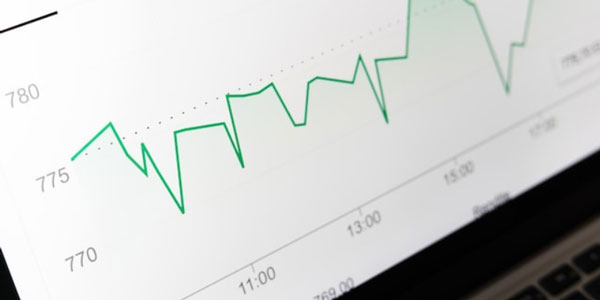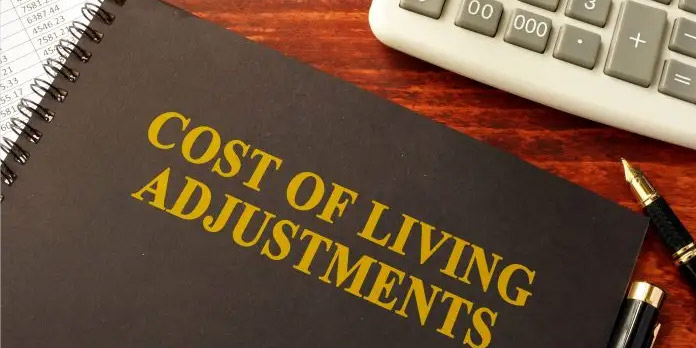What happens to the dollar when the Fed Funds Rate rises?
Triston Martin
Oct 29, 2023
The U.S. dollar may change in response to changes in the federal funds rate. Interest rates typically rise across the economy when the Federal Reserve raises the federal funds rate. The higher yields attract investment capital from foreign investors seeking better bonds and interest-rate securities returns.
Global investors exchange investments denominated in their home currencies for assets denominated in U.S. dollars. The outcome is a more robust exchange rate to the U.S. dollar's advantage.
Fed Funds Rate Definition
 The federal funds rate is referred to as the interest rate banks charge for borrowing cash or surplus reserves. While some banks may have a surplus of money, others may require short-term liquidity. The federal funds rate, a target rate established by the Federal Reserve Bank, serves as the typical benchmark for the interest rate at which commercial banks lend to one another.
The federal funds rate is referred to as the interest rate banks charge for borrowing cash or surplus reserves. While some banks may have a surplus of money, others may require short-term liquidity. The federal funds rate, a target rate established by the Federal Reserve Bank, serves as the typical benchmark for the interest rate at which commercial banks lend to one another.
How does the Fed Funds Rate control the economy?
The fed funds rate has a much broader impact on the economy. The prime rate, the price banks charge customers for loans, is determined by the fed funds rate, one of the fundamental principles of interest rate markets. Any changes to the fed funds rate also impact the rates for mortgages, loans, and savings deposits.
The FOMC applies several tools to affect interest rates and the economy.
The Fed adjusts rates through the Federal Open Market Committee (FOMC) in response to the economy's demands. The FOMC increases the Fed funds rate if it determines that the economy is expanding too quickly and that inflation or price increases are likely to occur.
In contrast, the FOMC would reduce the fed funds rate if it thought the economy was having trouble or was on the verge of a recession.
While lower rates encourage lending and economic expansion, higher rates hinder lending and the economy.
When Fed increases the interest rates, it has a negative effect on the stock market. When the Fed raises interest rates, the cost of doing business rises for public (and private) enterprises. Public companies' revenues and profitability may decline due to increasing prices and less business, which could affect their growth rate and stock values.
The Fed hiked the funds' rate by 0.50% during the FOMC meeting on May 3–4, 2022, bringing the target range down to 0.75%–1.00%.
The Fed anticipates that to combat inflation at its highest level since 1980, it will continue hiking the rate at upcoming sessions in 2022.
How do the Fed Funds Rates maximize employment?
 The Fed's monetary policy aims to support maximum employment and price stability.
The Fed's monetary policy aims to support maximum employment and price stability.
When the Fed reduces the range of interest rates, it is referred to as "expansionary monetary policy." Banks offer cheaper interest rates on all loans, including credit card, auto, and student loans.
The Federal Reserve kept the federal funds rate between 0% and 0.25% during the Great Recession and the 2008 financial crisis. The Fed raised rates in the years that followed as the economy expanded.
How does the Fed Funds Rate Manage Inflation?
The Fed can gain full employment and stable prices by establishing its inflation target rate at 2%. In 2011, the Fed officially set a 2% per year target for the price index for personal consumption expenditures.
When the index's inflationary component rises, the cost of goods increases throughout the economy. People's purchasing power decreases if prices rise, but incomes aren't growing. Inflation influences investors. If inflation increases to 2% while an investor holds a fixed-rate bond yielding 3%, the investor gets 1% in real terms.
Inflation decreases when the economy struggles because there is less demand for goods to raise prices. On the other hand, in a healthy economy, increased earnings lead to more consumption, which might result in higher pricing. Maintaining inflation at a 2% growth rate promotes sustained economic expansion and permits pay increases that come about gradually.
The federal funds rate's modifications may potentially have an impact on U.S. inflation. The Fed lowers inflationary pressures by raising interest rates by urging people to save more and spend less. In contrast, when the Fed lowers interest rates during a recession or the economy grows too slowly, this stimulates spending and increases inflation.
How does the U.S. Dollar help the Fed Funds Rate with Inflation?
Of course, the Fed influences inflation, and the exchange rate for the U.S. dollar affects inflation. When purchasing American commodities in Europe, customers must exchange euros for dollars, and the increased exchange rate results in Europeans paying more for American goods. If the currency is too robust, American export sales could fall.
A strong dollar also lowers the price of imports from abroad. When American businesses purchase items from Europe using the euro and the dollar are both strong, and the imports are less expensive. As a result, goods are cheaper in American retailers, which leads to low inflation.
Since American producers of goods must keep their prices low to compete with inexpensive imports, cheap imports help keep inflation low. Imports become more affordable thanks to a higher currency, which also serves as a natural hedge against inflation risk.
As you might expect, before making any decisions about the fed funds rate, the Fed closely watches inflation as well as the strength of the currency.
Example of the Fed Funds rate and the U.S. Dollar
The Fed reduced interest rates to keep the economy afloat in the wake of the COVID-19 outbreak.
During the COVID-19 pandemic, vaccination helped the economy to recover. Inflation sharply increased. The (Consumer Price Index (CPI), which measures price changes over 12 months, showed 8.5% inflation. The Fed raised interest rates in response for the first time since 2018.
As the fed funds rate rises, rates across the economy also increase. The dollar appreciates if international capital flows move into dollar-denominated assets in search of higher rates of return.
During the global COVID-19 epidemic in 2020, the dollar's value increased as investors sought stability. As the global economies recovered from the pandemic, the dollar progressively declined from its record high levels.
The dollar began to approach record high levels in 2021 and 2022 amid Fed rate hikes.
Bottom line
Increases in the federal funds rate typically and under normal economic circumstances result in higher rates for interest rate products across the U.S. The outcome is usually an increase in the value of the dollar. The relationship between the fed funds rate and the dollar's value can, of course, end. There are additional methods for the dollar to strengthen or weaken. For instance, regardless of where interest rates are set, demand for U.S. bonds as a safe-haven investment during turbulent times can boost the dollar's value.







